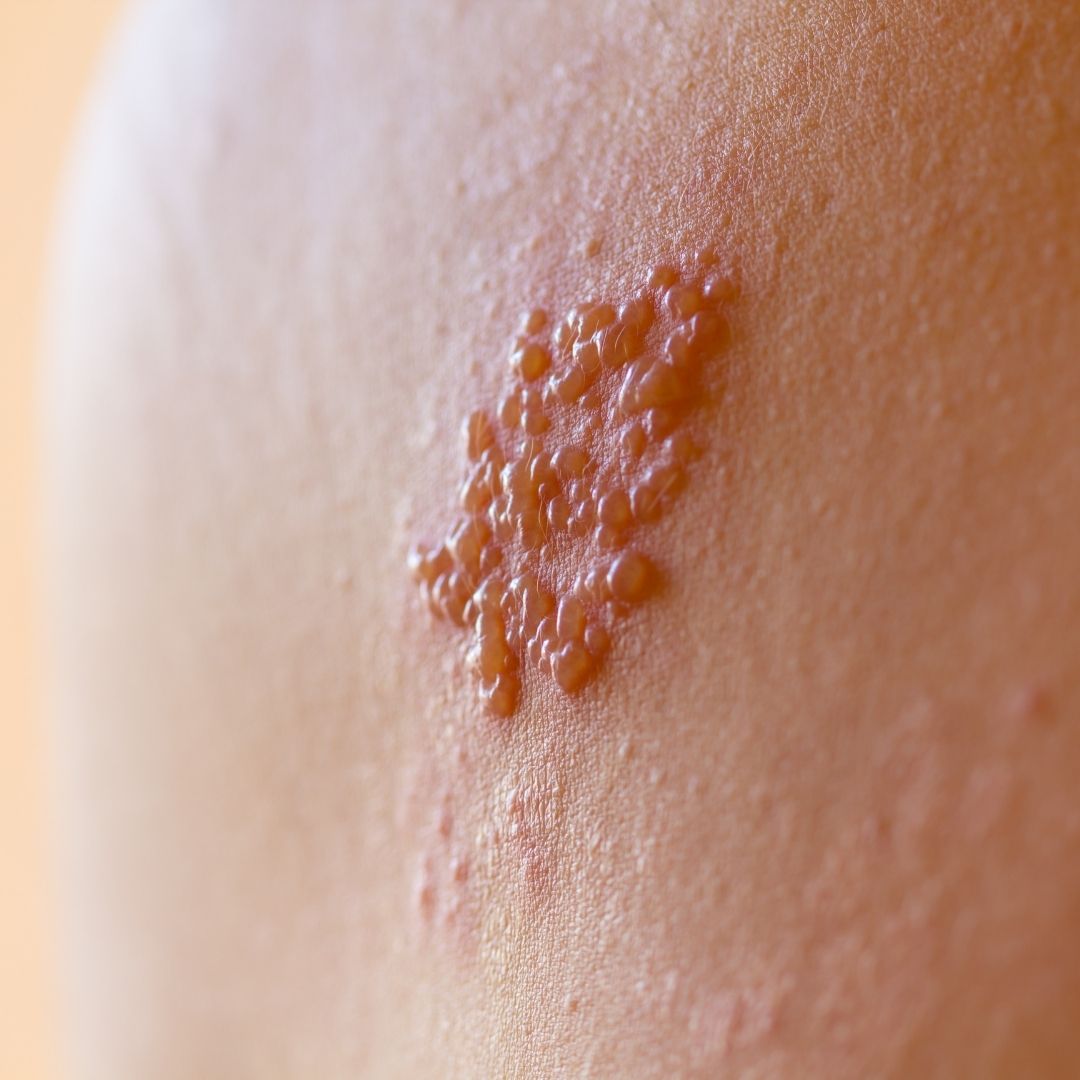By Dr. Peter Kappler Ph.D.
Shingles are caused by the reemergence of the varicella-zoster virus, which causes chickenpox. After an outbreak of chickenpox, the virus retreats to the person’s nerve cells, where it lies inactive until something (cause yet unknown) triggers its release.
Therefore, only those who have had chickenpox can develop shingles. For those who have not had chickenpox, shingles are contagious in the sense that they can pass along the chickenpox virus to non-immune people. This can only happen through direct contact with the fluid from shingles blisters, however, so the risk of it being spread is much lower than that of the actual chickenpox virus, which can be spread through sneezing or coughing.
Are shingles contagious for older people?
Most older people have had chickenpox at some point, and it is not possible to catch shingles from someone else, or to have a “sympathy response” to someone else’s case of shingles that causes their own virus to reactivate.
Shingles occur more often in older people, however, and they are more at risk for contracting the condition. This is due to the fact that their immune systems are generally weaker, and this is thought to aid in the release of the virus from the nerve cells.
Also, anyone who has a weakened immune system, regardless of age, is more at risk for developing shingles. Those with illnesses such as leukemia, HIV, or any immunodeficiency disease are more susceptible to the chickenpox virus (if they’ve not had it before) and to the reemergence of the virus via shingles. (NIH Medicine Plus)
What are symptoms of shingles?
Shingles symptoms usually begin several days before the rash breaks out. These sometimes include things such as extremely sensitive skin or burning pain in the affected area, headache, fever, and nausea. After a few days, the skin will become red and clusters of small blisters will appear. These blisters look much like those associated with chickenpox, but unlike chickenpox, the shingles rash usually appears on one side of the body. It develops in a “belt” along the affected nerve, typically on the upper torso or face. The blisters of the rash will fill with fluid, scab over, and begin healing within a couple of weeks, and are usually healed within a month.
Are shingles painful?
The pain from shingles ranges from mild to extremely severe. Each case is different, although older patients tend to suffer more from the pain of shingles than younger patients. If the pain is severe, a doctor may prescribe prescription painkillers. However, these are not always effective, and the pain of shingles often persists despite treatment.
Are shingles easily treated?
The traditional treatment for shingles consists of the prescription of antiviral medication to control the virus and keep it from spreading, a topical ointment such as calamine lotion for the rash, and pain relievers to ease discomfort. It is believed that the antiviral medication may help to reduce the amount of time it takes for the shingles rash to heal, if taken within the first three days of the outbreak.
If these methods of treatment don’t work, natural remedies such as Nerve Pain Management from Forces of Nature might be the solution. It has proven to be a safe and effective method of treatment for many shingles sufferers.
Are there any complications involved with shingles?
The most prevalent complication of shingles is that of post-herpetic neuralgia or PHN (Mayo Clinic). This condition is caused by the persistence of pain long after other symptoms of shingles have gone away. The pain associated with PHN is often much worse than that felt during the initial shingles outbreak and can last for years afterward. Treatment for this condition may include such things as antidepressants, steroids, or anticonvulsants to control the pain. For more severe cases of PHN, a method known as TENS or transcutaneous electrical nerve stimulation may be used to help the body produce endorphins that will act as natural pain relievers. In some cases, when other methods of pain relief have failed, a doctor may administer nerve block injections into the affected area to temporarily relieve pain.
Additional Complications
Another complication that may arise from an outbreak of shingles may be infection. It is very important to keep the affected area clean in order to prevent the rash from becoming infected and spreading to other parts of the body. Although rare, shingles has been known to spread to organs and cause serious damage if left untreated. If the virus spreads to the eyes, there is a possibility that the eye may become damaged, resulting in such things as loss of vision, glaucoma, or cataracts. Therefore, it is important to visit your doctor if the shingles rash threatens to infect the eye, as early treatment can prevent further complications.
Are Shingles Contagious?




